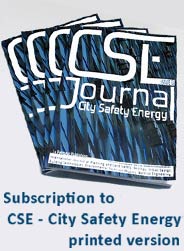Recycled plastic aggregates in manufacturing of insulating mortars
Abstract
In this paper artificial aggregates based on recycled plastic materials, mostly polyolefin and polyethylene terephthalate waste, were used as partial replacement of natural aggregates for manufacturing hydraulic mortars. In particular, different amounts (10 to 50% by weight) of siliceous sand were substituted by the same weight of the above plastic waste, to obtain six mortars with different composition. The influence of plastic addition on physical properties (density, porosity, water vapour permeability) was studied. Moreover the thermal conductivity of the obtained mortars were evaluated.
Recycled plastic substitution enhances the open porosity with an increase in water vapour permeability. Nevertheless, the presence of plastic aggregate leads to a significant reduction in thermal conductivity, which improves the thermal insulation performances of the mortar. For this reason the addition of recycled plastic aggregate in the manufacturing of hydraulic mortars can be considered a way to reduce the growing environmental impact of polymers and, at the same time, it allows the development of increasingly eco-sustainable building materials.
Keywords
Read the full text
PDFReferences
Ahmadinia, E., M. Zargar, M.R. Karim, M. Abdelaziz, and P. Shafigh. “Using waste plastic bottles as additive for stone mastic asphalt,” Materials and Design, no. 32 (2011): 4844–4849.
Corinaldesi, V., A. Mazzoli, and G. Moriconi. “Mechanical behaviour and thermal conductivity of mortars containing waste rubber particles,” Materials and Design, no. 32, 3 (2011): 1646–1650.
Eskander, S.B., and M.E. Tawfik. “Polymer-cement composite based on recycled expanded polystyrene foam waste,” Polymer Composites, no. 32, 9 (2011): 1430–1438.
Frigione, M. “Recycling of PET bottles as fine aggregate in concrete,” Waste Management, no. 30, 8 (2010): 1101–1106.
Iucolano, F., B. Liguori, and C. Colella. ”Fibre-reinforced lime-based mortars: A possible resource for ancient masonry restoration,” Construction and Building Materials, no. 38 (2013): 785–789.
Mesbah, H.A., and F. Buyle-Bodin. “Efficiency of polypropylene and metallic fibres on control of shrinkage and cracking of recycled aggregate mortars,” Construction and Building Materials, no. 13, 8 (2008): 439–447.
Saikia, N., and J. de Brito. “Use of plastic waste as aggregate in cement mortar and concrete preparation: A review,” Construction and Building Materials, no. 34 (2012): 385–401.
Siddique, R., J. Khatib, and I. Kaur. “Use of recycled plastic in concrete: A review,” Waste Management, no. 28 (2008): 1835–1852.
Sivakumar, A., and M. Santhanam. “Mechanical properties of high strength concrete reinforced with metallic and non-metallic fibres,” Cement & Concrete Composites, no. 29, 8 (2007): 603–608.
UNI EN 1015-19. Methods of test for mortar for masonry. Determination of water vapour permeability of hardened rendering and plastering mortars. European Standards 2008.
UNI EN 13139. Aggregates for mortar. European Standards 2003.
UNI EN 459-1. Building lime - Definitions, specifications and conformity criteria. European Standards 2001.
UNI EN 459-2. Building lime - Test methods. European Standards 2001.
UNI EN 933-1. Tests for geometrical properties of aggregates - Determination of particle size distribution - Sieving method. European Standards 2009.
Yazoghli Marzouk, O., R.M. Dheilly, and M. Queneudec. “Valorization of post-consumer waste plastic in cementitious concrete composite,” Waste Management, no. 27, 2 (2007): 310–318.
Yesilata, B., Y. Isiker, and P. Turgut. “Thermal insulation enhancement in concretes by adding waste PET and rubber pieces,” Construction and Building Materials, no. 23, 5 (2009): 1878–1882.
Zoorob, S.E., and L.B. Suparma. “Laboratory design and investigation of the properties of continuously graded asphaltic concrete containing recycled plastics aggregate replacement (Plastiphalt),” Cement & Concrete Composites, no. 22, 4 (2000): 233–242.
DOI: http://dx.doi.org/10.12896/cse2014001009
Refbacks
- There are currently no refbacks.

This work is licensed under a Creative Commons Attribution 3.0 License.
CSE Journal - City Safety Energy is a semiannual journal (Two ISSUES per Year) published by Le Penseur in Brienza (PZ) - Italy | ISSN print edition 2283-8767 | ISSN online edition 2284-3418 - Journal registerd at the Court of Potenza (Italy) n. 219/2014


